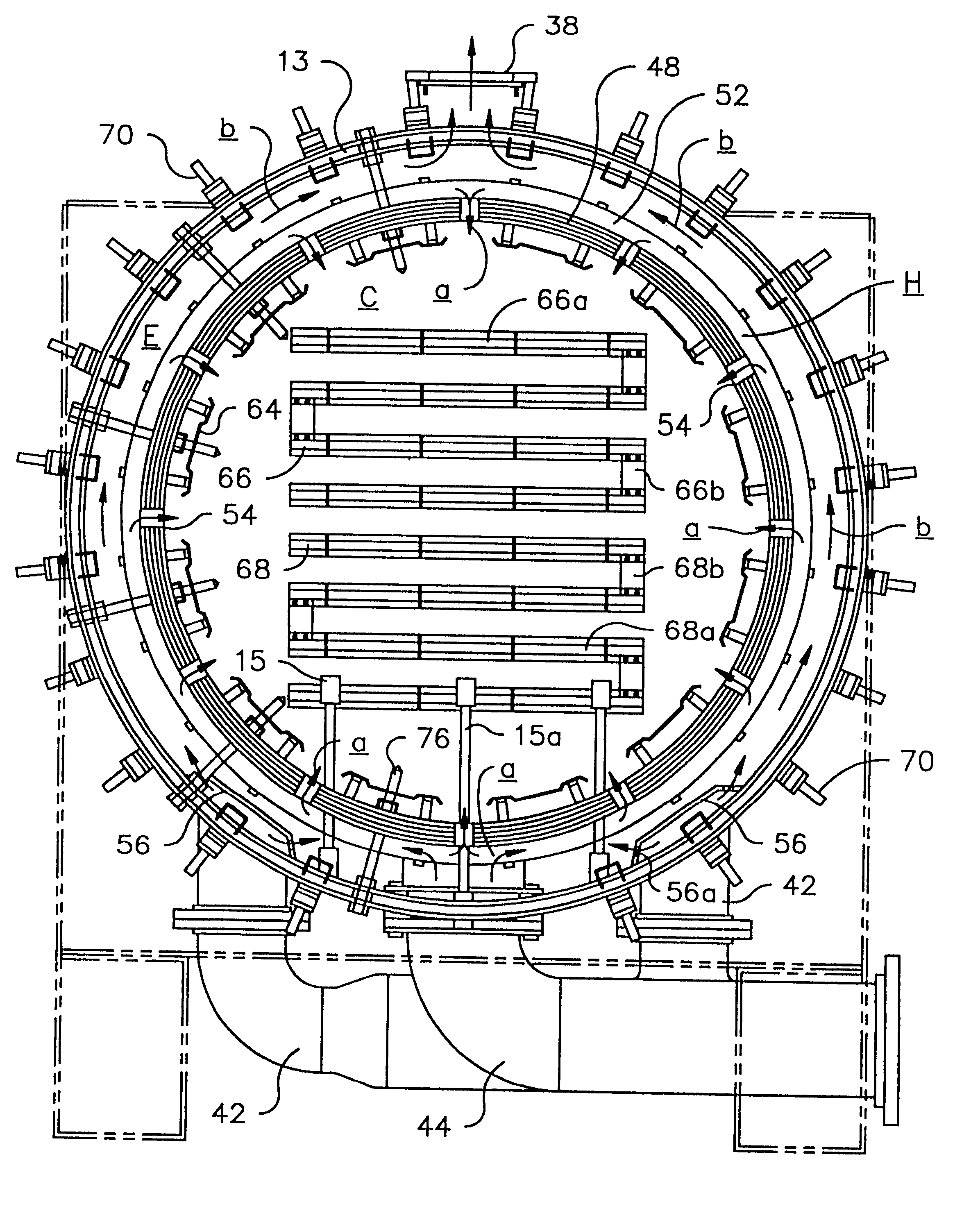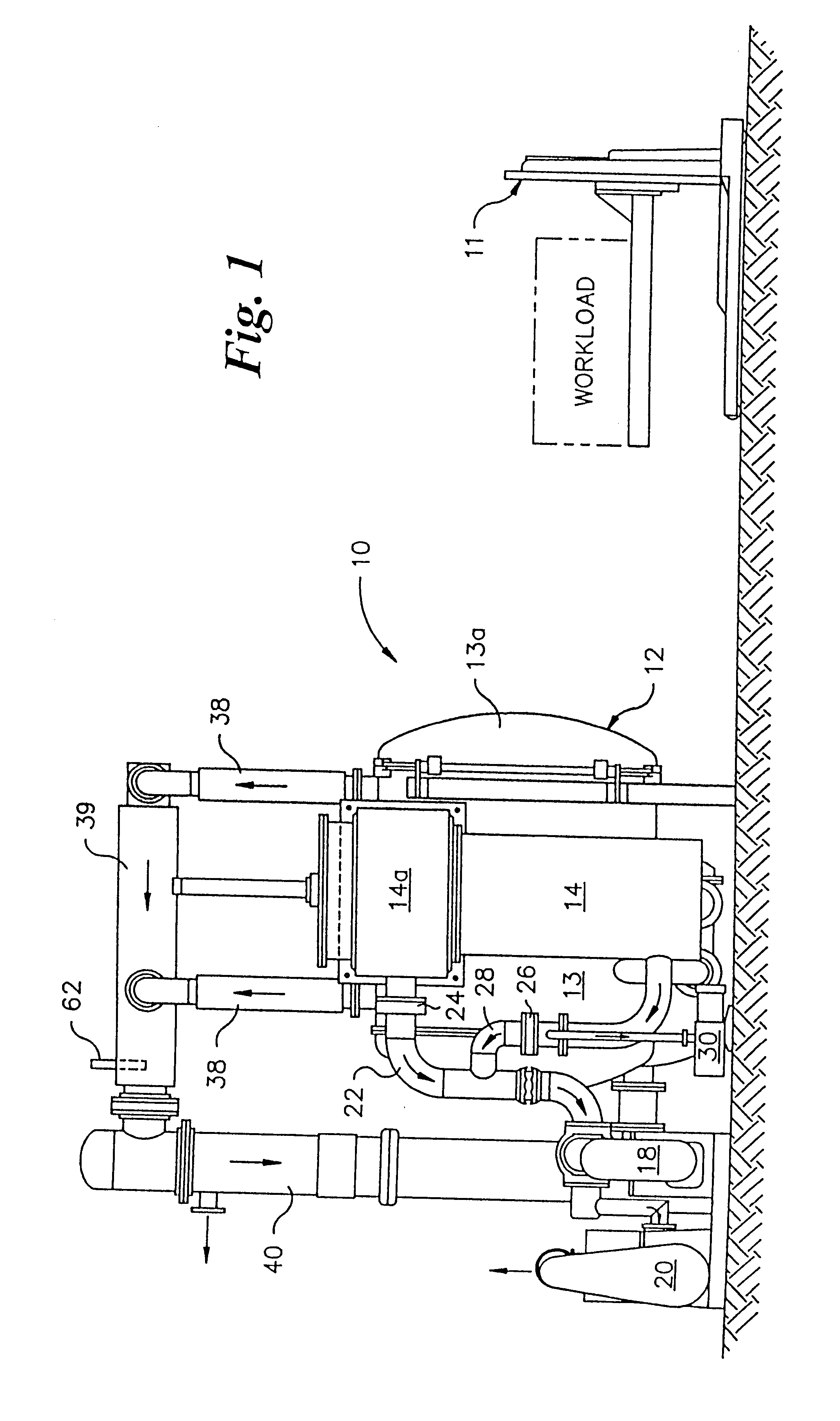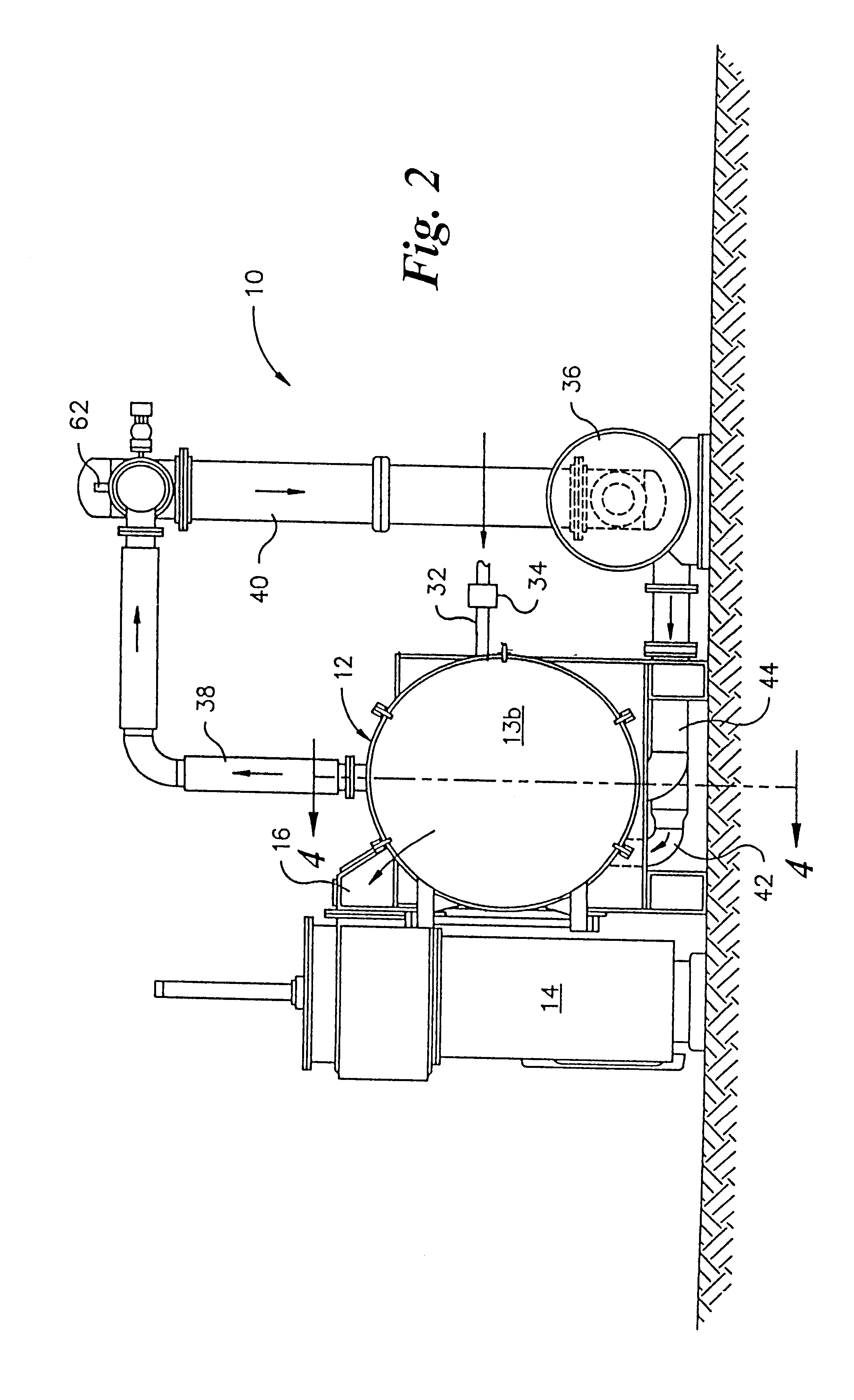High temperature vacuum furnace
a vacuum furnace and high temperature technology, applied in the direction of muffle furnaces, furnace heating elements, furnaces, etc., can solve the problems of insufficient uniform distribution of radiant energy from all surfaces for achieving the precision required, prone to sag under high temperatures between spaced apart supports, and inability to meet the needs of precision, etc., to achieve the effect of better uniformity
- Summary
- Abstract
- Description
- Claims
- Application Information
AI Technical Summary
Benefits of technology
Problems solved by technology
Method used
Image
Examples
Embodiment Construction
Referring now to the drawings wherein like reference numbers or characters denote like or corresponding parts throughout the several views, FIGS. 1-3 show a high temperature vacuum heat treating system according to the invention indicated generally be the numeral 10 comprising a water-cooled electric vacuum furnace 12 for receiving a workload and a loader truck 11 on tracks 11 a for positioning the workload therein. Furnace 12 includes a double-walled cylindrical vessel 13 closed at both ends by hinged double-walled front and rear loading doors 13a and 13b forming a vacuum-tight chamber. Cooling water is circulated between the double walls of vessel 13 and doors 13a, 13b by an exterior pump and heat exchanger not shown. A workload support is provided within the work space having three horizontal parallel rails 15 extending lengthwise and supported by axially spaced vertical rods 15a fixed to the bottom of vessel 13.
Vessel 13 is evacuated by a water-cooled oil diffusion pump 14, such...
PUM
 Login to View More
Login to View More Abstract
Description
Claims
Application Information
 Login to View More
Login to View More - R&D
- Intellectual Property
- Life Sciences
- Materials
- Tech Scout
- Unparalleled Data Quality
- Higher Quality Content
- 60% Fewer Hallucinations
Browse by: Latest US Patents, China's latest patents, Technical Efficacy Thesaurus, Application Domain, Technology Topic, Popular Technical Reports.
© 2025 PatSnap. All rights reserved.Legal|Privacy policy|Modern Slavery Act Transparency Statement|Sitemap|About US| Contact US: help@patsnap.com



